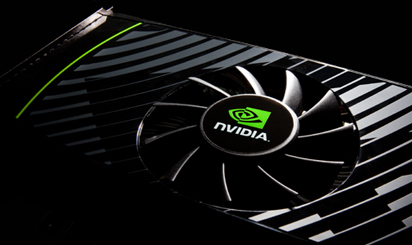
Tried it: Radeon HD 6790 vs. GeForce GTX 550 Ti OC - lightning test!

In our previous article with a video card, we dealt with the two competing solutions around and slightly below HUF 20, the GeForce GT 000 and the Radeon HD 440, now another duel will be discussed, this time from the price segment around HUF 6670. One of the participants, the GTX 30 Ti, had visited us before, now a warrior from Leadtek, seasoned with unique cooling and some tuning.
His opponent will be the newly debuted Radeon HD 6790, let's see how AMD's "needs solution" performs. We weren't completely satisfied with the performance of the GTX 550 Ti, although it had to compete with a Radeon HD 6850. Now its real opponent, the HD 6790, is here, so the second act follows, with new driver programs. Let's get to know the cards quickly!

Winfast GTX 550 Ti OC was delivered
We will not deal with the architectural features of the GTX 550 Ti now, as we have already done in our previous article, so we will only examine the child of Leadtek itself. The printed circuit board of the card is black, measuring 19,5 cm (W) × 11 cm (today), so it is average. The cooling is similar to the ASUS solution, with aluminum ribs interwoven with copper heat pipes (2 pieces of 9 mm), with a design cover plate, and an 8 cm fan. The solution takes up two card slots, of course there is nothing surprising about this.
The card is connected to the motherboard via a PCI Express 2.0 interface, with additional power supply via a single 6-pin PCI Express power connector. The full-fledged GF116 core is surrounded by GDDR5 chips, totaling 1GB (we know the trick about this), which communicate with the graphics core on a 192-bit bus.
As this is a factory OC solution, the card has received a small tuning, the GPU runs at 900 MHz instead of 930 MHz, the clock speed of the CUDA cores has increased from 1800 to 1860 MHz, while the GDDR5 chips are ticking at 4104 MHz , their operating frequency did not change anyway. In terms of outputs, we get two Dual-link DVIs and a mini-HDMI, which is also suitable for 1.4a, ie 3D content.
Of course, the Leadtek Winfast GTX 550 Ti OC supports all the independent and proprietary features used today: DirectX 11, Shader Model 5.0, Direct Compute 5.0, CUDA, 3D Vision, 3D Vision Surround, PhysX, OpenCL, OpenGL 4.1. In the box you will find the usual things, ie an installation disc, user manual, DVI–> VGA converter and a molex–> 6-pin PCI Express power converter.
AMD Radeon HD 6790

AMD has brought this model to life out of compulsion and, surprisingly, because of the GeForce GTX 550 Ti. This type of NVIDIA has been tested before and we were not thrilled with its performance (due to the special design of 1 GB of memory, high resolutions can be a danger), but as its price began to be quite friendly, sales fluctuated, so NVIDIA could finally tick the GTX. 550 Next to you.

AMD first tried to use the Greens in a naive way, meaning it quickly renamed and re-released the Juniper-based duo HD 5750-5770 as HD 6750-6770. However, the HD 6770 proved to be little against the GTX 550 Ti, so I had to take action. AMD's real response was eventually the HD 6790.

This is an interesting mule solution. The card's GPU is based on Barts, which is good news. In the unofficial baptism, it was named BartsLE. Practically the successor to the HD 5830 in terms of location, its job is to be faster than the HD 6770 and GTX 550 Ti, but not to reach the Radeon HD 6850. It probably won’t even happen, as BartsXT (HD 6870) has 1120 and BartsLE (HD 6850) 980 compared to the Barts (HD 6790) 800 stream processor.

In this respect, the strange situation arises that this number is the same as the HD 5770 shading number. The identity is correct, but it’s not about renaming, that similarity was what fate wanted (and maybe AMD too). However, there is a big difference, and that is the memory bus, as Junipers often got into trouble because of the 128-bit RAM controller, even though they had GDDR5 on them, the bandwidth wasn’t even enough. The HD 6790 works with a 256-bit bus and the use of GDDR5 has remained, fortunately similar to its brothers in this respect as well. Of course, at the level of services and technologies, you know the same as the others. There is a reference model of the HD 6790, but most manufacturers make their own solution using the GPU.

HIS 6790 IceQ X Turbo
The name HIS is almost synonymous with the concept of reworked, custom video cards, the IceQ series is almost a legend, but the range continues to expand, with this Radeon HD 6790 coming to the IceQ X family. In HIS, the blue color world is often dominant, it is no different now, the cooling shines straight in baby blue, which is presumably intended to embody the cold, the ice, ie that the IceQ X cooling works with extremely good efficiency.
The also blue printed circuit board is relatively large, the dimensions of the card including cooling are as follows: 14,2 cm high, 4,2 thick and 26 cm long. On the PCB, a large, densely laminated, nickel-plated rib peaks at the GPU. Heat dissipation is also aided by nickel-plated, four thick heat pipes. Hot air extraction is the job of the 9,2 cm PWM controlled fan. Communication with the motherboard is via a PCI Express 2.1 bus, the auxiliary power supply requires two 6-pin PCI Express power connectors, which is a bit surprising and requires more appetite than usual, but let’s not forget it’s a factory OC card.
This results in the GPU running at 900 MHz while the 1GB GDDR5 running at 4400 MHz and keeping in touch with the core on a 256-bit bus. The range of outputs is very rich, in addition to the two DVIs (one Single and one Dual-Link) and the native HDMI 1.4a, there are also two mini-DisplayPort connectors on the front of the card. The box and packaging bring the quality you would expect from HIS, with two discs, a manual, two molex–> PCI Express converters, a CrossFireX bridge and a dSub-DVI adapter included.



























